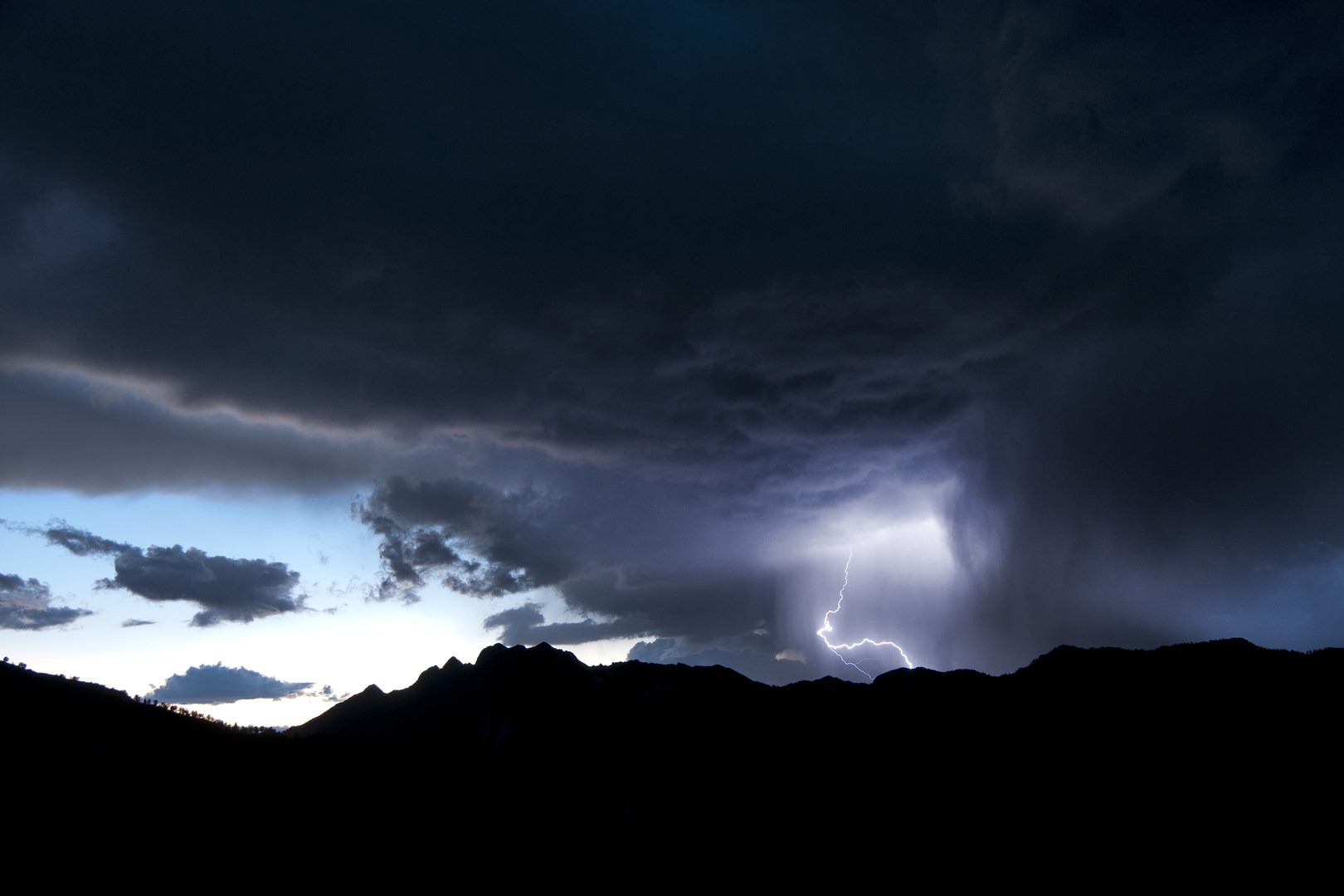You are here
One of the perils of being outside on a consistent basis is the possibility of finding yourself caught in a lightning storm. On average, 300 people are struck by lightning in the United States each year, but thankfully only around 10% die from their injuries. The vast majority of survivors, however, suffer life-long physical and neurological issues of some sort. As more and more people are finding solace in the outdoors, that number is expected to rise slightly each year. Summer is the peak lightning season and the peak hiking season, and the monsoons of the American Southwest are notorious for their high lightning activity. Let's take a minute to learn a few things we need to keep in mind to help us stay safe outdoors.
Check the Weather Prediction
It sounds ridiculous, but often we head out on long adventures without even once checking the weather predictions. Don't rely on your generic weather app on your phone; make sure to use the NOAA reports for accurate updates. You can check online, on their official app and if you have a weather radio on pre-set stations that loop recorded updates starting at 162.400 MHz through 162.550 MHz, depending on your area. Many walkie-talkies and other devices have weather radios as a built-in feature. Remember to always assume that these predictions are less than what could happen; I have seen some crazy storms in the mountains on days with a forecast of a 0% chance of rain. Hiking at elevation, especially when it's a steep face, will greatly increase the risk for inclement weather. The sharply rising air cools and then condenses while the friction creates static electricity, which is a perfect recipe for electrical storms. Remember, it's a weather prediction, not a weather guarantee.
Avoid Peaks and Trees
One of the hallmarks of a lightning strike is its tendency to hit among the highest available points. This means you will want to get down off of the high elevations and outcroppings if you see heavy dark clouds rolling or hear thunder in the distance. It feels like a natural instinct to hide under the nearest tree while the storm passes, but this can be dangerous. Avoid the tallest tress when seeking shelter, and keep in mind that a strike or the wind can bring down one of the limbs right onto you. Trees also conduct electricity down to their base where most people huddle, and they also splinter when struck. We often hide under them to avoid the rain, wind and hail that accompanies the storm, but if you can, head to the open meadows. You will feel more vulnerable and exposed, and you will get pelted by the weather, but statistically you are in the safest place.
How Far Away is the Lightning?
Sound travels at 700 mph, which is slow enough for us to calculate how far away a lightning strike is. Count off the seconds with "one-Mississippi" to "two-Mississippi" and so on, until you hear the thunder. For every second that passes, the sound travels a little over a thousand feet. If you hear the thunder five seconds or less after a strike, then it is within a mile or less of you. If you are hearing the thunder very quickly and loudly after the flash, then you are much too close and need to find shelter or get away from all high points. If you are in a safe place but the strikes are getting close, you might want to consider covering your ears and eyes; these are the other two non-life threatening injuries associated with nearby strikes.
Get out of the Water
Do I need to say more? It is amazing how many people die each year while fishing in rivers, while boating, while swimming at beaches and while floating on inner tubes. A strike in the water within a few hundred feet can be fatal. Our hearts run on an electrical pulse that does not need much interference to lose its rhythm. Don't wait for the lightning to get close, just get out and get away from the water. If there is any thunder around, wait it out. No fun day on the water is worth risking your life. Some days are just meant to enjoy a good book. Pick your days wisely and you will have more of them to enjoy.
Be safe out there everyone! Lightning is one of the few things that can really harm you on an otherwise safe trail, so it deserves to be taken seriously.





Comments
Sign In and share them.